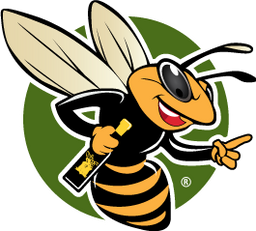Bees are essential to our ecosystem, playing a crucial role in pollination and biodiversity. However, when they establish hives in homes or businesses, they can become a cause for concern. Rather than resorting to harmful extermination methods, hiring a professional bee catcher ensures the safe removal and relocation of these vital pollinators. This guide will help you understand the importance of bee catchers, how to find one near you, and what to consider when choosing the right expert for the job.
What Is a Bee Catcher?
A bee catcher is a trained professional specializing in the safe capture, removal, and relocation of bees. Unlike general pest control services that may exterminate insects, bee catchers focus on humane and environmentally responsible methods to preserve bee populations. They often work in collaboration with beekeepers and conservation groups to relocate bees to areas where they can continue pollinating without posing risks to humans.
Why Are Bee Catchers Important?
Bee catchers play a crucial role in maintaining ecological balance. Their work benefits both the environment and the public by:
-
Preventing unnecessary harm to bee populations.
-
Reducing the risk of honeybee stings and allergic reactions.
-
Supporting pollination efforts essential for agriculture and biodiversity.
-
Educating communities about the benefits of coexisting with bees rather than eliminating them.
How to Find a Bee Catcher Near You
If you’re dealing with a bee infestation or an unwanted hive, finding a bee catcher is a priority. Here are some methods to locate one quickly and effectively:
Online Search Methods
One of the easiest ways to find a local bee catcher is through online searches. Using search terms like “bee catcher near me”, “humane bee removal service”, or “bee relocation expert” can yield a list of professionals in your area.
Check customer reviews and ratings on platforms such as:
-
Google Maps
-
Yelp
-
HomeAdvisor
-
Better Business Bureau (BBB)
Additionally, local Facebook groups or neighborhood apps like Nextdoor can provide recommendations from others who have used bee-catching services.
Local Directories and Community Resources
In addition to online searches, other resources can help you locate a reliable bee catcher:
-
Yellow Pages: Many bee removal professionals list their services in traditional business directories.
-
Local Beekeeping Associations: Contacting a beekeeping group can lead to referrals for ethical bee removal experts.
-
Agricultural Extension Offices: Many local government agencies have contacts for bee removal specialists.
-
Community Bulletin Boards: Check postings in local stores, farmers' markets, or community centers.
Services Provided by Bee Catchers
Bee Removal Techniques
Bee catchers employ various humane and effective methods to remove bees, including:
-
Trap-Out Methods: Special traps lure bees away from structures, allowing them to be safely removed.
-
Vacuum Extraction: Some bee catchers use low-pressure vacuums to collect bees without causing harm.
-
Physical Barriers: In cases where bee access points need sealing, professionals use screens or nets to encourage the bees to relocate naturally.
Bee Relocation and Rescue
After removal, bee catchers relocate bees to suitable environments where they can thrive. The relocation process typically includes:
-
Identifying a safe habitat away from urban areas.
-
Transporting bees using protective containers.
-
Ensuring the bees integrate successfully into a managed hive.
Bee catchers often work with beekeepers, conservation groups, or local farms that benefit from increased pollination.
What to Consider When Choosing a Bee Catcher
Not all bee catchers offer the same level of expertise and care. When selecting a professional, keep the following factors in mind:
Experience and Certifications
An experienced bee catcher understands different bee species, their behaviors, and the safest removal methods. Look for:
-
Certification from recognized pest control or beekeeping organizations.
-
Years of experience in humane bee relocation.
-
Affiliations with national or local beekeeping associations.
Customer Reviews and Testimonials
Reading customer reviews can help gauge the effectiveness and reliability of a bee catcher. Look for feedback on:
-
Their success in safely relocating bees.
-
Their professionalism and knowledge.
-
How quickly and efficiently they handled the job.
If possible, ask for referrals from previous clients to verify their track record.
Use of Humane Methods
Avoid hiring pest control services that exterminate bees. Instead, choose a bee catcher who prioritizes safe removal and relocation techniques. Ask about their methods beforehand to ensure they align with environmental best practices.
Conclusion
Finding a trustworthy bee catcher near you is essential for safely managing bee infestations while protecting these valuable pollinators. By choosing a professional who specializes in humane bee removal and relocation, you contribute to environmental conservation and ensure public safety.
Using online searches, local directories, and community recommendations, you can locate a skilled bee catcher who aligns with eco-friendly practices. With the right professional, you can resolve bee-related concerns responsibly, ensuring that both people and bees can coexist harmoniously.
Frequently Asked Questions
1. What is the role of bees in the ecosystem?
Bees are crucial pollinators that help plants reproduce by transferring pollen. Their work supports biodiversity, maintains food supplies, and contributes to healthy ecosystems. Without bees, many crops and wild plants would struggle to survive.
2. Why should I hire a local bee catcher instead of exterminating the bees?
Hiring a local bee catcher ensures that bees are safely relocated rather than killed. This approach helps preserve bee populations, which are vital for pollination and environmental health. Exterminating bees can contribute to declining pollinator numbers, which negatively impacts agriculture and ecosystems.
3. How can I find a nearby bee catcher quickly?
To find a bee catcher near you, use search engines like Google, check online directories such as Yelp or the BBB, or reach out to local beekeeping associations. Social media and community apps like Nextdoor can also provide recommendations from neighbors.
4. What types of bee removal services are available?
Bee removal services typically include humane relocation, trap-out methods, vacuum extraction, and hive rehoming. Some bee catchers also provide swarm removal, hive relocation, and consultation services for preventing future infestations.
5. How much does bee removal cost?
The cost of bee removal varies depending on factors such as the size of the hive, location, and removal complexity. Prices typically range from $100 to $500, but more extensive removals or structural repairs may increase costs. Many professionals provide free estimates.



